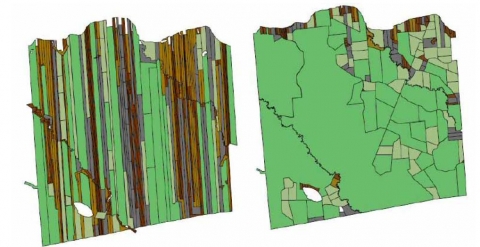Forest estate arrangements
The fragmented ownership structure is one of the main challenges of wood mobilization in Europe. In Finland, 4 million hectares of forest area are in need of forest arrangements. Small-sized, dispersed forest property with difficult access to forests results in high costs for timber harvesting per hectare. Forest management and harvesting are more difficult in small estates since boundaries and forest vehicle paths take up most of the estate.
Through the process of forest estate arrangements, it is possible to form bigger forest estates for cost efficiency. Arrangements can be made by changing estates among forest owners to shape the size and form of the forest estate. The arrangements might need trading forest estates. A new forest consolidation and forest conservation are possible also. Forest road network and drainage need to be adapted for the new situation. The process takes usually 3-6 years depending on the area.
Forest estate arrangements lead to bigger forest estates units, which contribute to better forest management and harvesting. Forest owners become more active in taking care of their forests and forestry companies are more interested in mobilizing wood from better harvesting conditions and easier access to forest.
To gain the benefits, more discussion and communication are needed around forest estates. Forest owners need to be activated in taking action concerning the arrangements of their forests.
Bigger forest estates with easier access to forest property.
Better conditions for harvesting.
Cost-efficiency in harvesting and forest regeneration.
Active management of forests.
Easier management of forests.
Increased forest growth.
Tax relief and financial support for forest owners.
Easier access to forest estate, less impact on soil and biodiversity
Requires access to forest estate information and co-operation of different stakeholders, including authorities.

